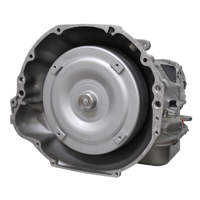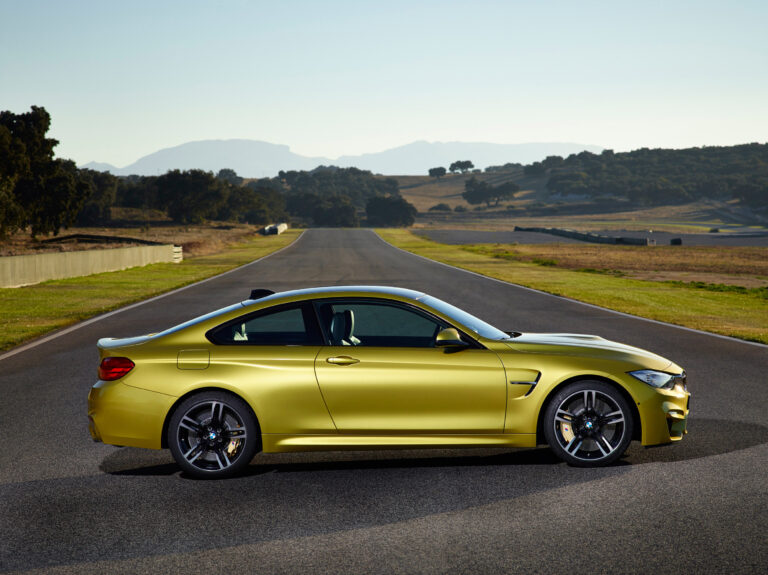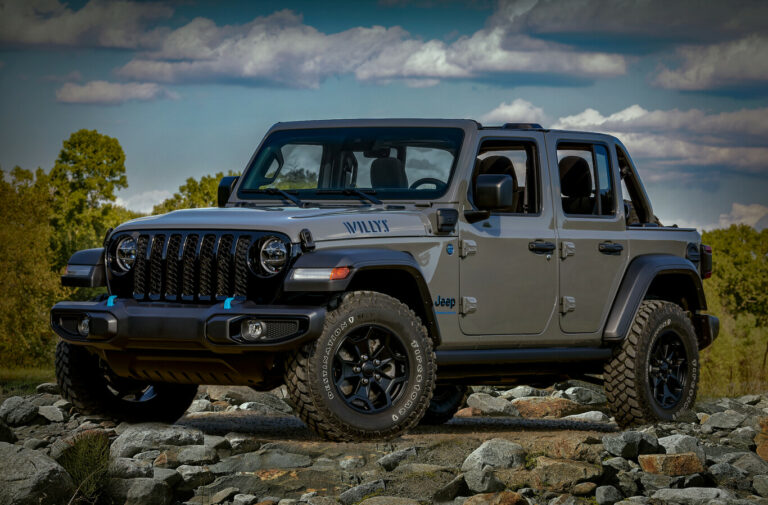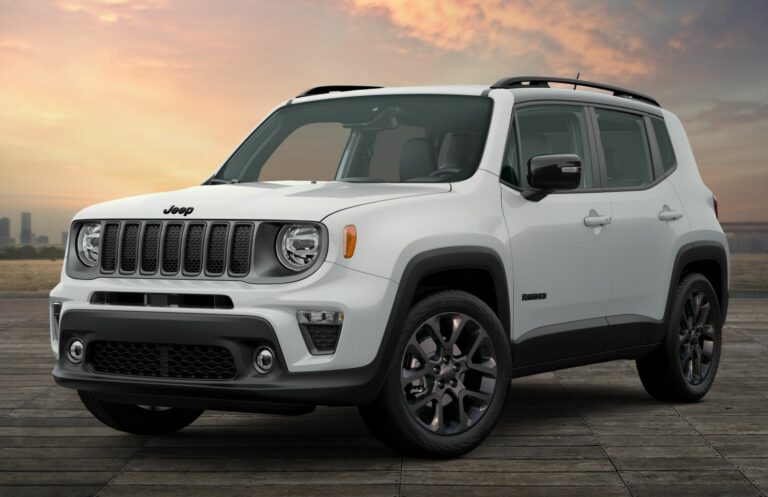Jeep CJ Axles For Sale: A Comprehensive Buyer’s Guide
Jeep CJ Axles For Sale: A Comprehensive Buyer’s Guide jeeps.truckstrend.com
The Jeep CJ, an icon of American automotive history, represents raw utility, rugged capability, and an enduring spirit of adventure. From its humble beginnings as a military vehicle to its evolution into the beloved civilian Jeep, the CJ series (CJ-2A, CJ-3A, CJ-3B, CJ-5, CJ-6, CJ-7, CJ-8 Scrambler) has captured the hearts of off-road enthusiasts and classic car collectors alike. At the very core of a CJ’s legendary capability are its axles – the crucial components that transfer power from the drivetrain to the wheels, bear the vehicle’s weight, and define its stance and strength.
For anyone restoring a classic CJ, repairing a damaged one, or embarking on an ambitious off-road build, the quest for "Jeep CJ Axles For Sale" is a fundamental and often complex undertaking. Whether you’re seeking period-correct stock axles to maintain authenticity, or robust aftermarket upgrades to tackle extreme trails, understanding the nuances of CJ axles is paramount. This guide will delve deep into the world of Jeep CJ axles, helping you navigate the options, considerations, and common pitfalls to ensure your beloved CJ continues its legacy on or off the beaten path.
Jeep CJ Axles For Sale: A Comprehensive Buyer’s Guide
Why Buy Used or Aftermarket CJ Axles?
The market for Jeep CJ axles is vibrant and diverse, driven by various needs:
- Restoration: Many CJ owners aim for a historically accurate restoration, requiring specific stock axles that match their vehicle’s year and model. Finding original, well-preserved axles can be challenging but rewarding.
- Repair & Replacement: Accidents, rust, or extreme off-road abuse can damage existing axles beyond repair. A replacement axle, whether used stock or new aftermarket, becomes essential.
- Performance Upgrades: Stock CJ axles, particularly those from earlier models, can be a weak link when larger tires, more powerful engines, or aggressive off-roading are introduced. Upgrading to stronger, more durable axles is a common modification.
- Custom Builds: For highly modified rock crawlers, desert racers, or custom street machines, CJ axles (or axle housings) serve as the foundation for a bespoke suspension and drivetrain setup.
- Cost-Effectiveness: Purchasing used axles, even if they require a rebuild, can be significantly more affordable than buying brand-new components, making projects more accessible.

The decision to buy used stock axles versus new aftermarket ones often boils down to budget, intended use, and the level of modification desired. Each path has its own set of advantages and considerations.
Understanding Jeep CJ Axle Types
Jeep CJs, over their production span, utilized a variety of axles, each with its own characteristics, strengths, and weaknesses. Understanding these is crucial for making an informed purchase.
Stock CJ Axles

- Dana 25/27 (Front): Found in early CJs (e.g., CJ-2A, CJ-3A, early CJ-5/6). These are generally weaker axles with closed knuckles and a kingpin design. While historically accurate for restorations, they are not ideal for aggressive off-roading due to their limited strength and poor turning radius compared to later designs.
- Dana 30 (Front): Introduced in later CJ-5/6 models and standard in CJ-7/8. This is an open-knuckle, ball-joint design and a significant improvement over the Dana 25/27. It’s reasonably strong for light to moderate off-roading, especially with upgraded components (chromoly shafts, better U-joints). It’s a common and widely available axle.
- Dana 44 (Rear): Less common as a stock rear axle in CJs, primarily found in some CJ-5/6 models (especially with V6/V8 engines) and a few early CJ-7s. It’s significantly stronger than the AMC 20 and is highly sought after for upgrades. Its semi-float design is robust, and aftermarket support is excellent.
- AMC 20 (Rear): Standard in most CJ-7/8 models. While relatively strong in its housing and ring/pinion, the primary weakness of the AMC 20 is its two-piece axle shafts, which are prone to bending or breaking, especially with larger tires or aggressive driving. Many owners upgrade to one-piece aftermarket shafts. The differential cover is also thin and can be damaged.
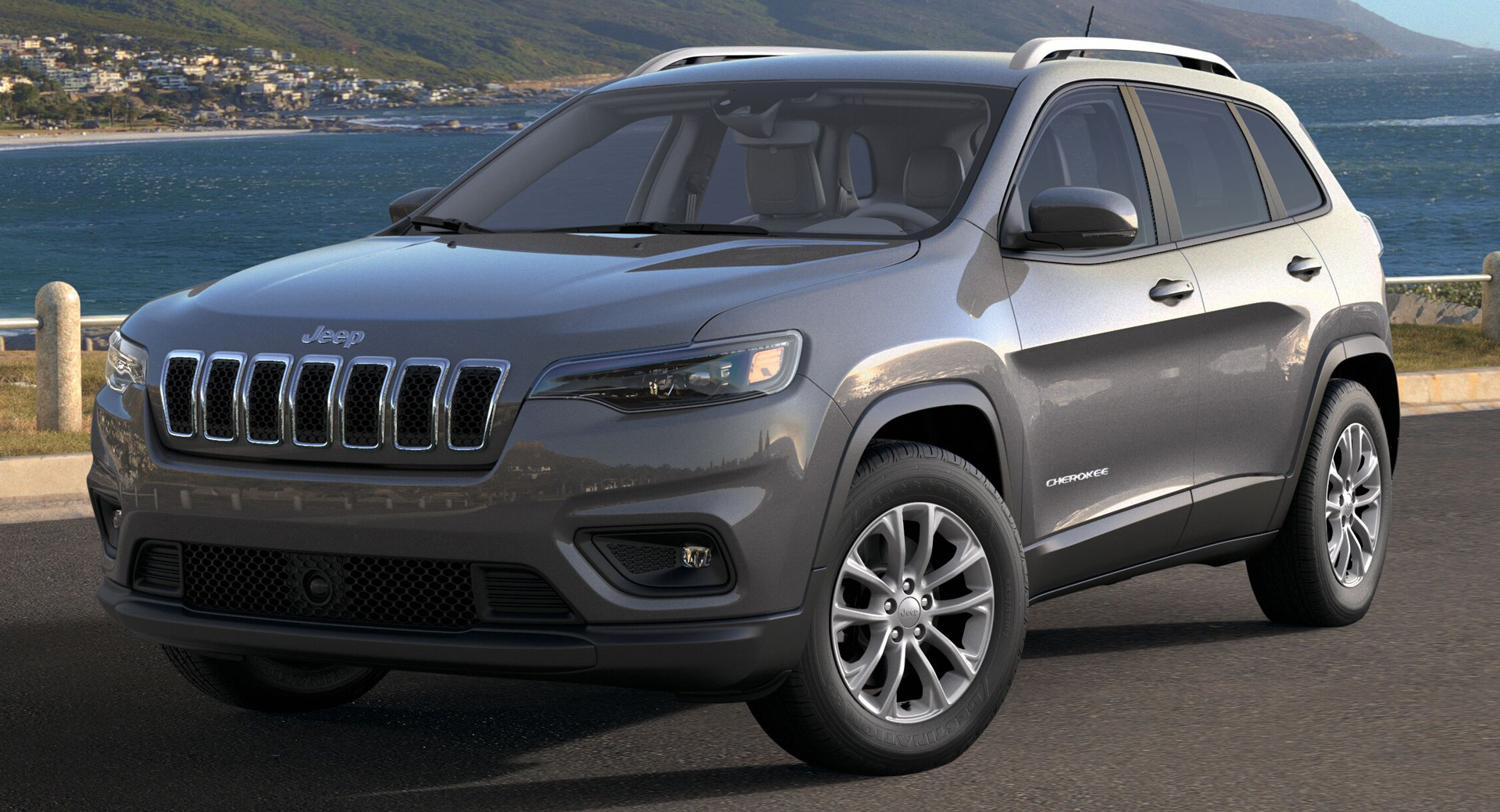
Popular Aftermarket and Upgrade Axles
Many CJ owners choose to swap out their stock axles for stronger, more reliable units, often sourced from other vehicles or purpose-built aftermarket manufacturers.
- Dana 44 (Front/Rear): Often sourced from full-size Jeeps (J-series trucks, Wagoneers), Ford Broncos, or custom aftermarket housings. A common and highly recommended upgrade for CJ-7/8, offering significant strength improvements over the Dana 30 front and AMC 20 rear. Available in both semi-float and full-float configurations (full-float being stronger).
- Ford 9-Inch (Rear): A legendary axle known for its incredible strength, ease of gearing changes (due to its removable third member design), and vast aftermarket support. It’s a popular choice for high-horsepower builds and extreme off-roading.
- Dana 60 (Front/Rear): The gold standard for extreme off-roading and heavy-duty applications. These massive axles are incredibly strong but also heavy and require significant modification to fit a CJ, often necessitating a wider stance and custom suspension.
- GM 14-Bolt (Rear): Another extremely robust and relatively inexpensive heavy-duty option, often pulled from ¾ and 1-ton GM trucks. Like the Dana 60, it’s very heavy and wide, requiring extensive modifications for a CJ.
Key Considerations When Buying CJ Axles
Purchasing axles, especially used ones, requires careful consideration of several factors to ensure you get the right components for your build.
- Condition: This is paramount. Inspect for rust, bent axle tubes, cracks in the housing, damaged mounting points, and excessive play in bearings or ball joints/kingpins. Minor surface rust is often acceptable, but structural damage is a deal-breaker.
- Gearing: The gear ratio within the differential is critical. It must match between the front and rear axles (if buying a pair) and be appropriate for your engine, transmission, and tire size. Incorrect gearing will lead to poor performance, excessive wear, and potentially catastrophic drivetrain failure. Confirm the ratio via the tag (if present) or by rotating the input shaft and counting wheel revolutions.
- Width: CJs came in "narrow track" and "wide track" versions. Ensure the axles’ width is compatible with your vehicle’s current setup or your desired stance. Swapping to wider axles might require fender flares or different wheels.
- Bolt Pattern: Most CJs use a 5×5.5" bolt pattern. If upgrading to axles from other vehicles (e.g., Ford 9-inch, Dana 60), the bolt pattern may differ (e.g., 5×4.5", 6-lug, 8-lug), requiring different wheels or adapters.
- Brakes: Check the condition of the brake drums or calipers/rotors. Many stock CJ axles came with drum brakes. If upgrading, consider axles with disc brakes already installed or plan for a disc brake conversion.
- Lockers/LSDs: Some used axles may come with aftermarket lockers (e.g., ARB, Detroit Locker) or limited-slip differentials (LSDs) already installed. This can be a bonus but also adds to the cost and requires understanding the device’s function and maintenance.
- Steering Components: For front axles, inspect the tie rod, drag link, and steering knuckles for wear or damage. These may need replacement.
- Suspension Mounts: Axles come with spring perches, shock mounts, and control arm mounts (for coil spring setups). Ensure these are compatible with your CJ’s leaf spring setup, or be prepared to cut off and weld on new mounts, which is common for axle swaps.
Where to Find Jeep CJ Axles For Sale
The market for CJ axles is robust, but knowing where to look can save you time and money.
- Online Marketplaces: Websites like eBay, Craigslist, and Facebook Marketplace are treasure troves for used parts. Be wary of scams, insist on clear photos, and ideally, inspect in person.
- Specialty Jeep Forums & Classifieds: Dedicated forums (e.g., Pirate4x4, JeepForum, local Jeep club forums) often have classified sections where enthusiasts sell parts. This is a great source for expert advice and well-maintained components.
- Salvage Yards / Junkyards: These can be hit or miss but often yield complete axles at bargain prices. The challenge is often confirming the condition and specifications without disassembling them. Look for vehicles that appear to have been well-maintained.
- Off-Road Shops & Fabricators: Many custom off-road shops specialize in axle builds and often have used cores or complete upgraded axles for sale. They can also perform necessary modifications like re-gearing or adding lockers.
- Swap Meets & Off-Road Events: These events are excellent for finding parts, networking, and getting hands-on with components before buying. You can often negotiate prices directly with sellers.
Tips for Inspecting and Purchasing
- Bring a Magnet: Check for excessive body filler or repairs on the housing.
- Look for Fluid Leaks: Leaking seals indicate worn components or damage.
- Check for Play: Grab the differential input yoke and rotate it. Excessive play could mean worn bearings or gear lash issues.
- Confirm Gearing: If there’s no tag, rotate the input yoke and count how many times the wheel turns. For example, if the wheel turns roughly 3.73 times for one full rotation of the yoke, it’s a 3.73:1 ratio. Do this for both front and rear if buying a pair.
- Ask Questions: Don’t hesitate to ask the seller about the axle’s history, the donor vehicle, why it’s being sold, and any known issues.
- Factor in Rebuild Costs: Unless explicitly stated as "freshly rebuilt," assume a used axle will need new seals, bearings, and potentially U-joints or ball joints. Factor these costs into your budget.
- Shipping: Axles are heavy! If buying from a distance, get a firm shipping quote before committing. Freight shipping can be expensive.
Installation and Maintenance Considerations
Once you’ve acquired your CJ axles, the journey continues with installation and ongoing maintenance.
- Professional vs. DIY: Axle swaps and modifications can be complex. If you’re not experienced with welding, suspension geometry, and drivetrain mechanics, consider professional installation. Incorrectly installed axles can lead to severe safety hazards and vehicle damage.
- Tools: A comprehensive set of tools, including jacks, jack stands, wrenches, sockets, a torque wrench, and potentially a welder, are essential for a DIY install.
- Fluid Changes: Always change the differential fluid after installation. Use the correct type and weight of gear oil.
- Bearing Checks: Periodically inspect wheel bearings, U-joints (for front axles), and ball joints/kingpins for wear and tear.
- Alignment: After any major axle or suspension work, a professional alignment is crucial, especially for front axles, to ensure proper steering and tire wear.
Practical Advice and Actionable Insights
- Do Your Homework: Before you even start looking, research what axles came in your specific CJ model and what common upgrades are popular for your intended use. Know the strengths and weaknesses.
- Define Your Build Goals: Are you restoring a show Jeep, building a mild trail rig, or a hardcore rock crawler? Your goals will dictate the type and strength of axles you need. Don’t overbuild (or underbuild) for your purpose.
- Budget Wisely: Beyond the purchase price, factor in potential shipping costs, rebuild kits (bearings, seals), new brake components, and labor if you’re not doing the work yourself. A cheap axle can quickly become expensive.
- Don’t Rush: Finding the right axles can take time. Be patient, inspect thoroughly, and don’t feel pressured into a purchase that isn’t right for your CJ.
Jeep CJ Axle Price Guide (Estimated)
Please note: Prices are highly variable based on condition, location, included components (brakes, lockers, shafts), and market demand. These are general estimates.
| Axle Type (Front/Rear) | Condition | Estimated Price Range (USD) | Common Application/Notes |
|---|---|---|---|
| Dana 25/27 (Front) | Used, Fair to Good | $150 – $400 | Early CJ restorations; not recommended for serious off-road. |
| Dana 30 (Front) | Used, Fair to Good | $250 – $600 | Common CJ-7/8 replacement/upgrade; moderate off-road. |
| AMC 20 (Rear) | Used, Fair to Good | $200 – $500 | CJ-7/8 replacement; often requires one-piece shaft upgrade. |
| Dana 44 (Rear) | Used, Fair to Good | $400 – $1,000 | Strong upgrade for CJ-7/8; check for condition and gearing. |
| Dana 44 (Front) | Used, Fair to Good | $500 – $1,200 | Popular swap from Wagoneer/Scout; significant upgrade. |
| Ford 9-Inch (Rear) | Used, Core | $300 – $800 | Requires rebuild/customization; very strong. |
| Ford 9-Inch (Rear) | Used, Rebuilt/Complete | $1,000 – $2,500 | Ready for installation; highly desired. |
| Dana 60 (Front/Rear) | Used, Core | $800 – $1,500 | Heavy-duty, requires extensive modification for CJ. |
| Dana 60 (Front/Rear) | Used, Rebuilt/Complete | $2,000 – $4,000+ | Extreme off-road builds; specialized application. |
| Custom/New Aftermarket Axles | New | $2,500 – $8,000+ per axle | Built to spec, often with lockers, disc brakes, heavy-duty shafts. |
Frequently Asked Questions (FAQ)
Q1: Can I put a Dana 44 in my CJ-7?
A1: Yes, a Dana 44 rear axle is a very popular and recommended upgrade for a CJ-7, replacing the weaker AMC 20. Dana 44 front axles from Wagoneers or Scouts are also common front axle swaps. Modifications to spring perches and shock mounts are typically required.
Q2: What’s the best axle for a daily driver CJ?
A2: For a daily driver, retaining the stock Dana 30 front and upgrading the AMC 20 rear with one-piece axle shafts is often sufficient. If you plan for light off-roading, a Dana 44 rear swap provides excellent peace of mind without excessive weight or cost.
Q3: How do I tell what gear ratio an axle has?
A3: Look for a metal tag on one of the differential cover bolts; it usually lists the ratio (e.g., 3.73). If no tag, you can perform a "spin test": With the axle on jack stands and in neutral, rotate the input yoke (pinion flange) exactly one full revolution and count how many times the wheel rotates. This will give you an approximate ratio.
Q4: Should I buy a complete axle or just the housing?
A4: A complete axle includes the differential, shafts, and brakes, making it quicker to install but potentially hiding issues. A bare housing is cheaper but requires you to source all internal components, allowing for a custom build with new parts, often preferred for high-performance builds.
Q5: What are the common issues with AMC 20 rear axles?
A5: The primary weaknesses are the two-piece axle shafts, which can shear or bend, and a relatively thin differential housing cover that can be easily damaged on rocks. Upgrading to one-piece chromoly shafts and a thicker diff cover solves most of these problems.
Q6: Are wider axles better for off-roading?
A6: Wider axles (like those from a full-size Jeep or truck) can increase vehicle stability on side hills and improve articulation. However, they also lead to a wider stance, potentially requiring fender flares to remain street legal and can make navigating tight trails more challenging.
Conclusion
The search for "Jeep CJ Axles For Sale" is more than just a transaction; it’s a critical step in preserving, enhancing, or transforming a piece of automotive history. Whether you’re chasing the authenticity of a period-correct restoration or pushing the boundaries of off-road performance with heavy-duty upgrades, the right axles are the backbone of your CJ’s capabilities. By understanding the different types, knowing what to look for, and considering your ultimate goals, you can confidently navigate the market. With the right axles in place, your Jeep CJ will not only continue its legacy but also carry you on countless new adventures, embodying the rugged spirit that has defined it for generations.


